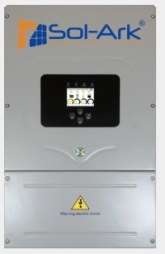My understanding is that Deye manufactures for Sol-Ark. Sol-Ark may have requested for other features for the USA (and puerto Rico) markets.
Check out also Sunsynk (also made by Deye). The distributor of Sunsynk made a video of a factory tour, and the factory was... Deye.
Dunno pricing of Deye in the USA, but I know in my area the 8kW Deye is less than US$3k. The 8kW Sol-Ark is about $6k, so if I were looking at Sol-Ark, I'd skip that and go for the 12kW (just a tad more than the 8kW).
Couple of Deye videos on YouTube (and nearly all say its sold as Sol-Ark in the USA). Might as well check out Sunsynk videos, too.
What Sol-Ark would have, and were I in the USA I might look at the Sol-Ark despite the premium, is the superb service, after sales, and support. Haven't heard anything but good, nay, GREAT stuff about them. You can't really put a price on that.




